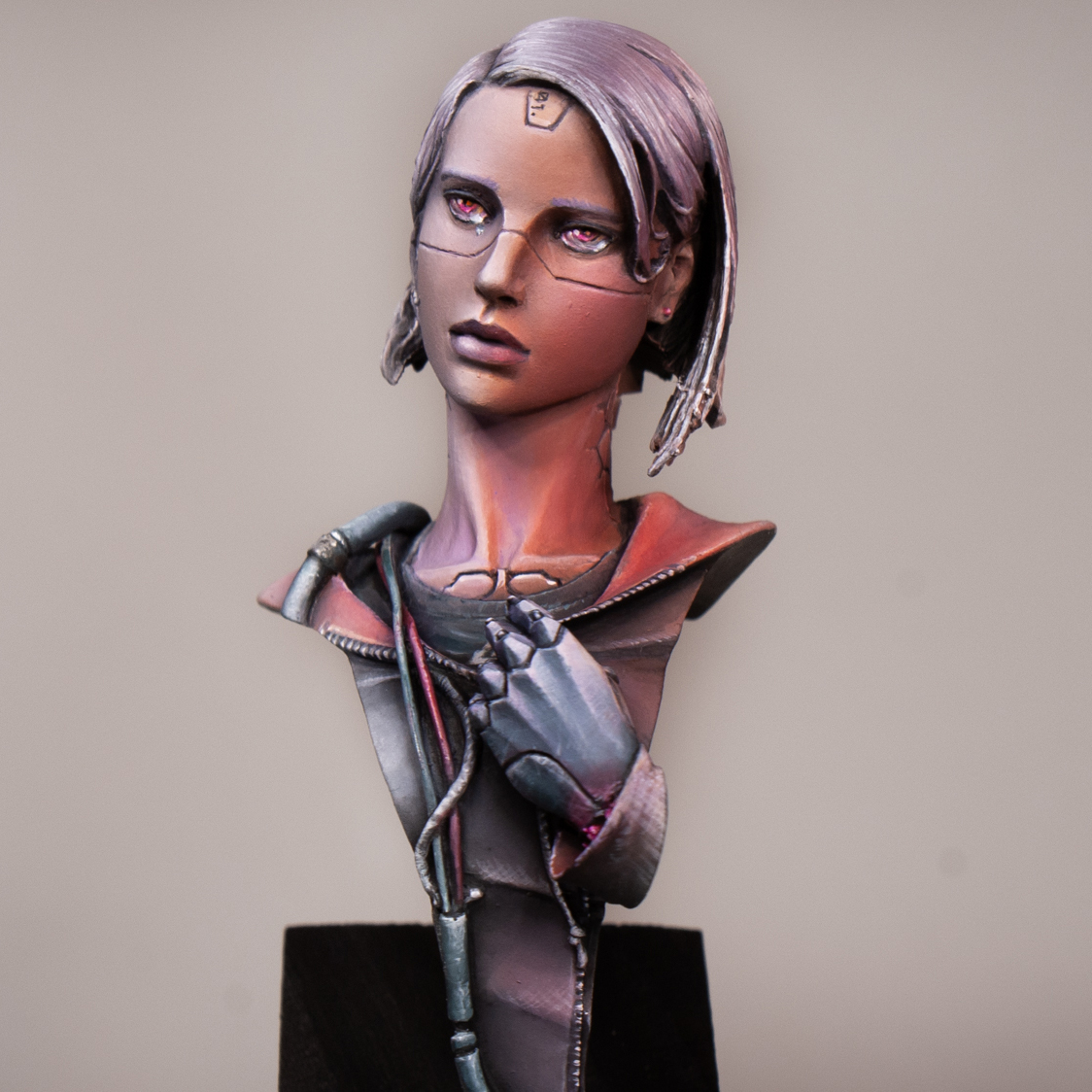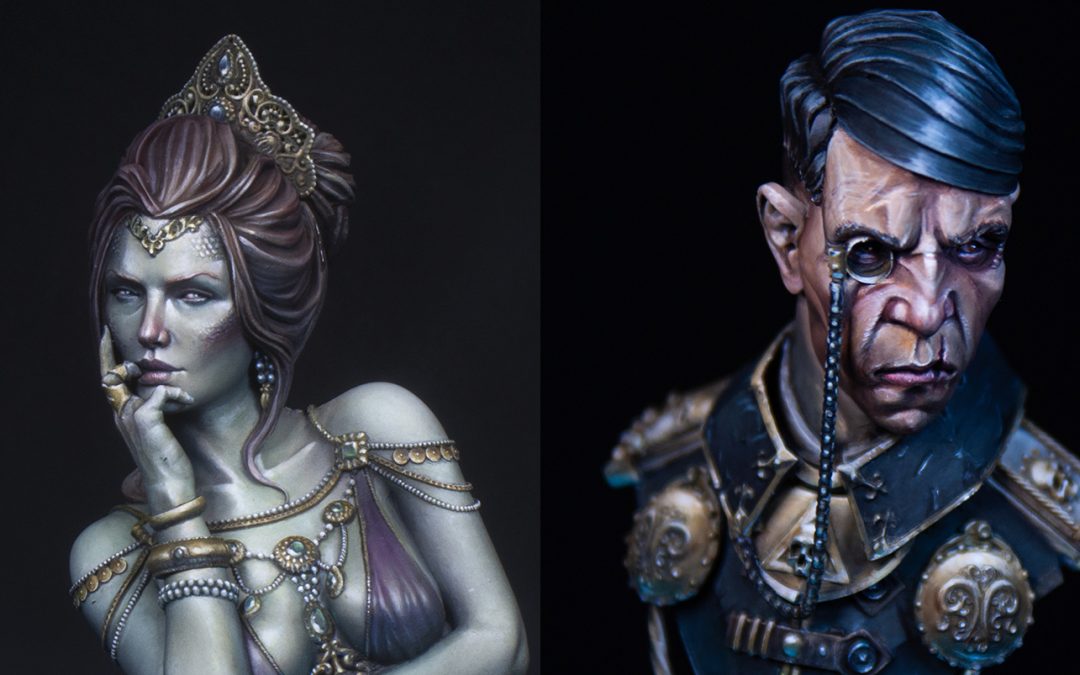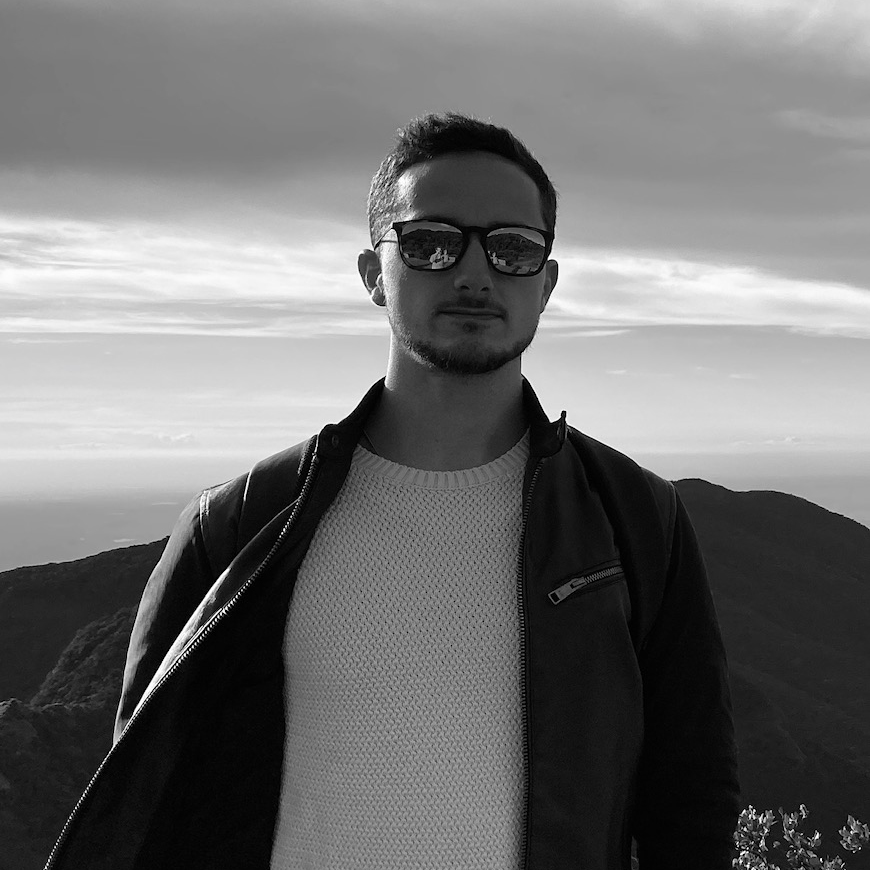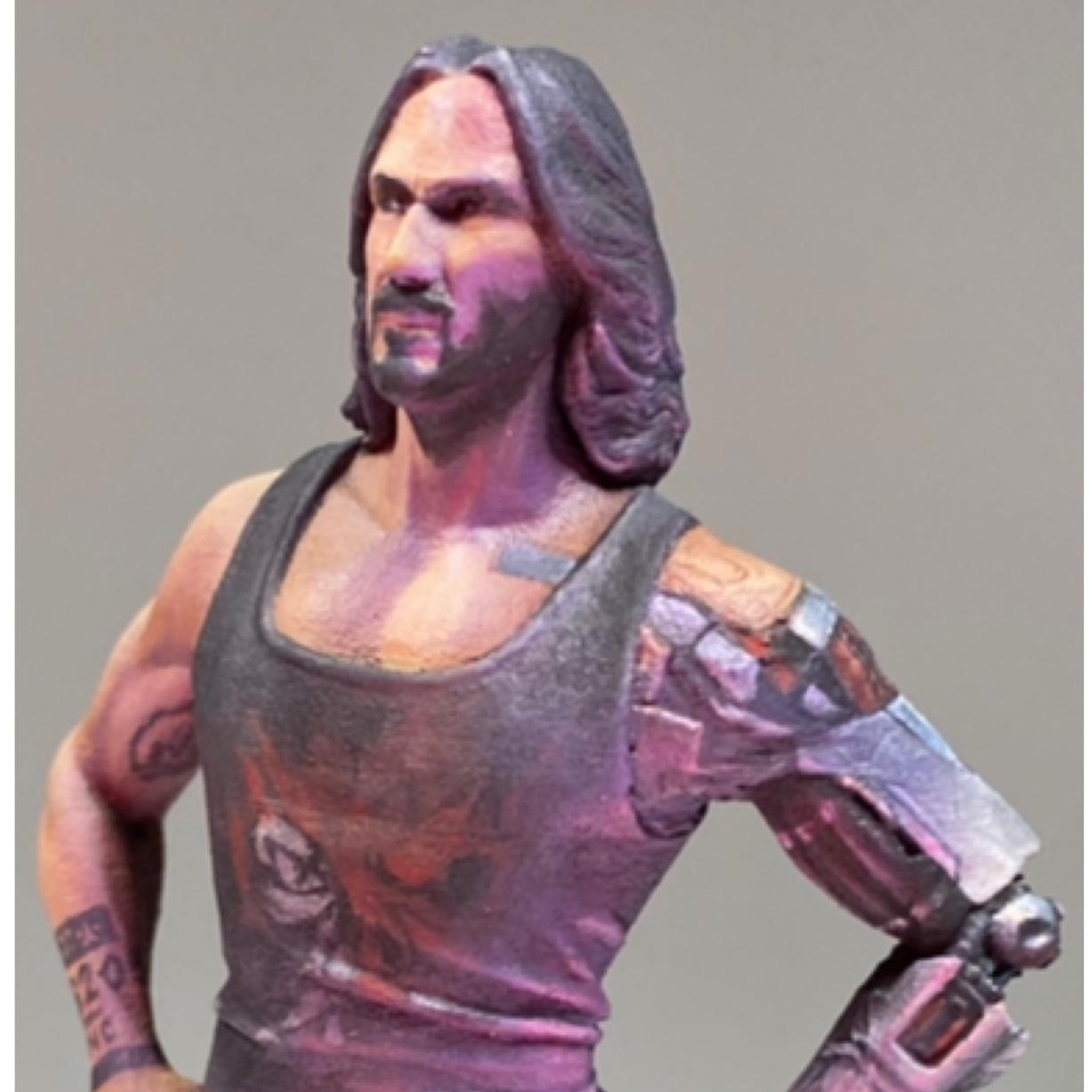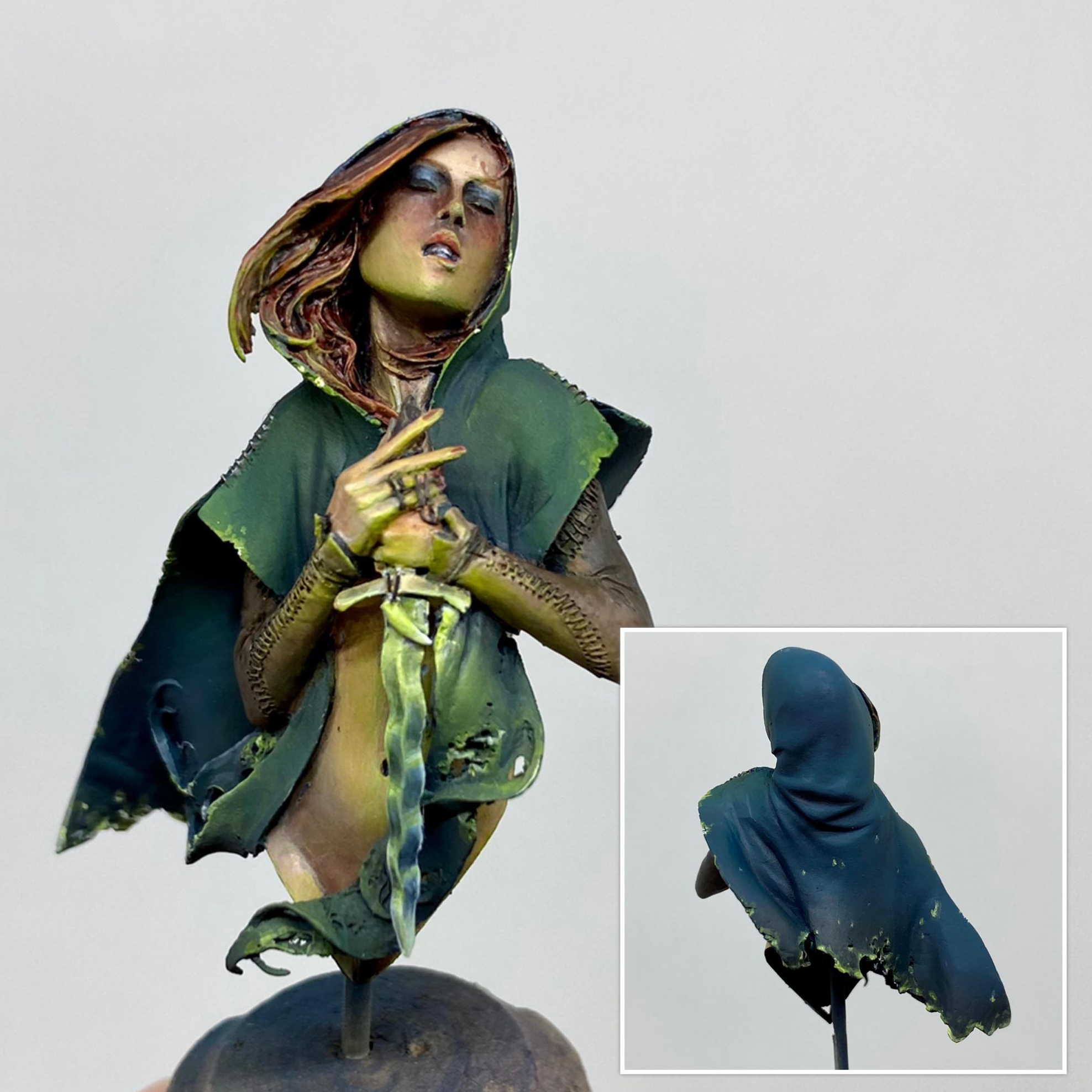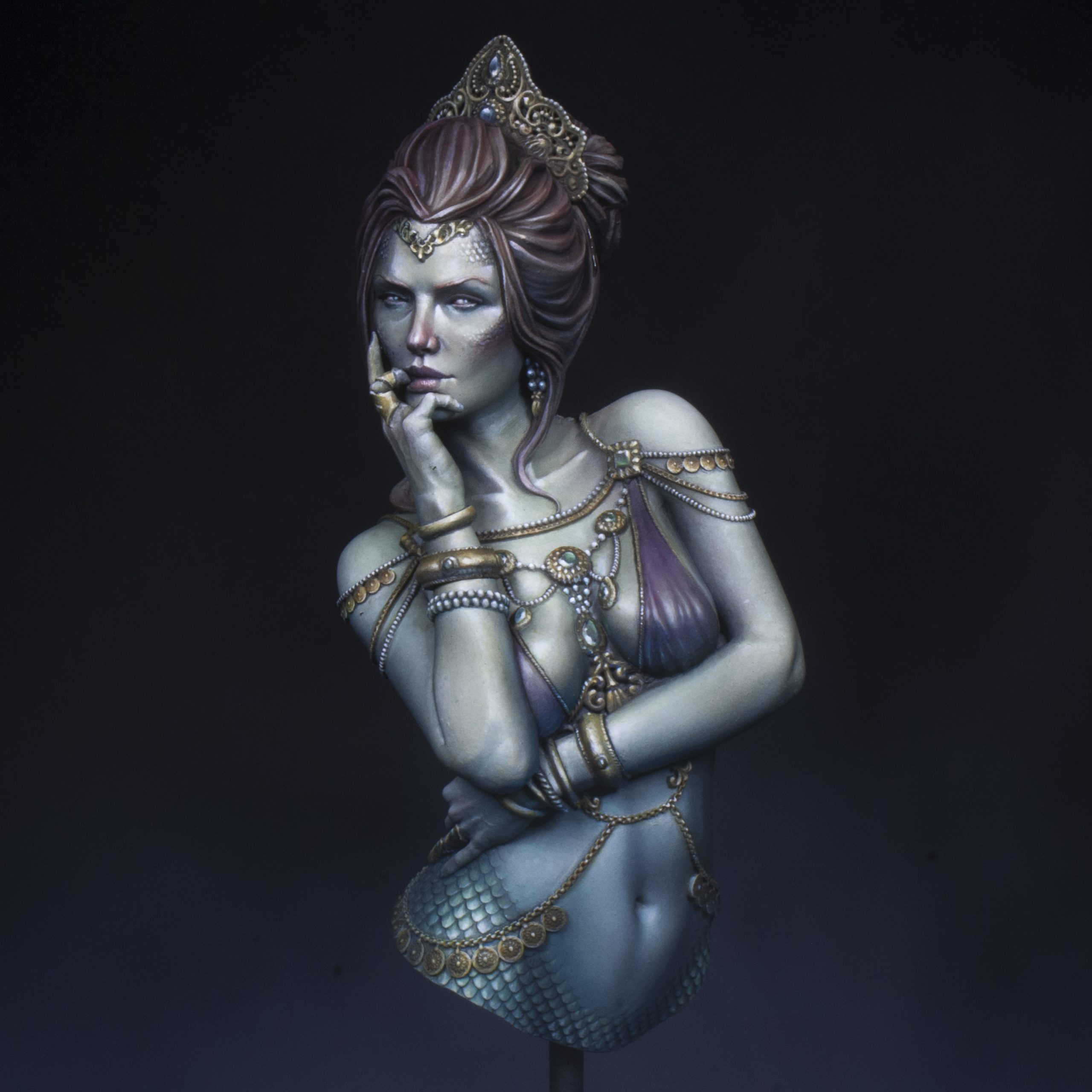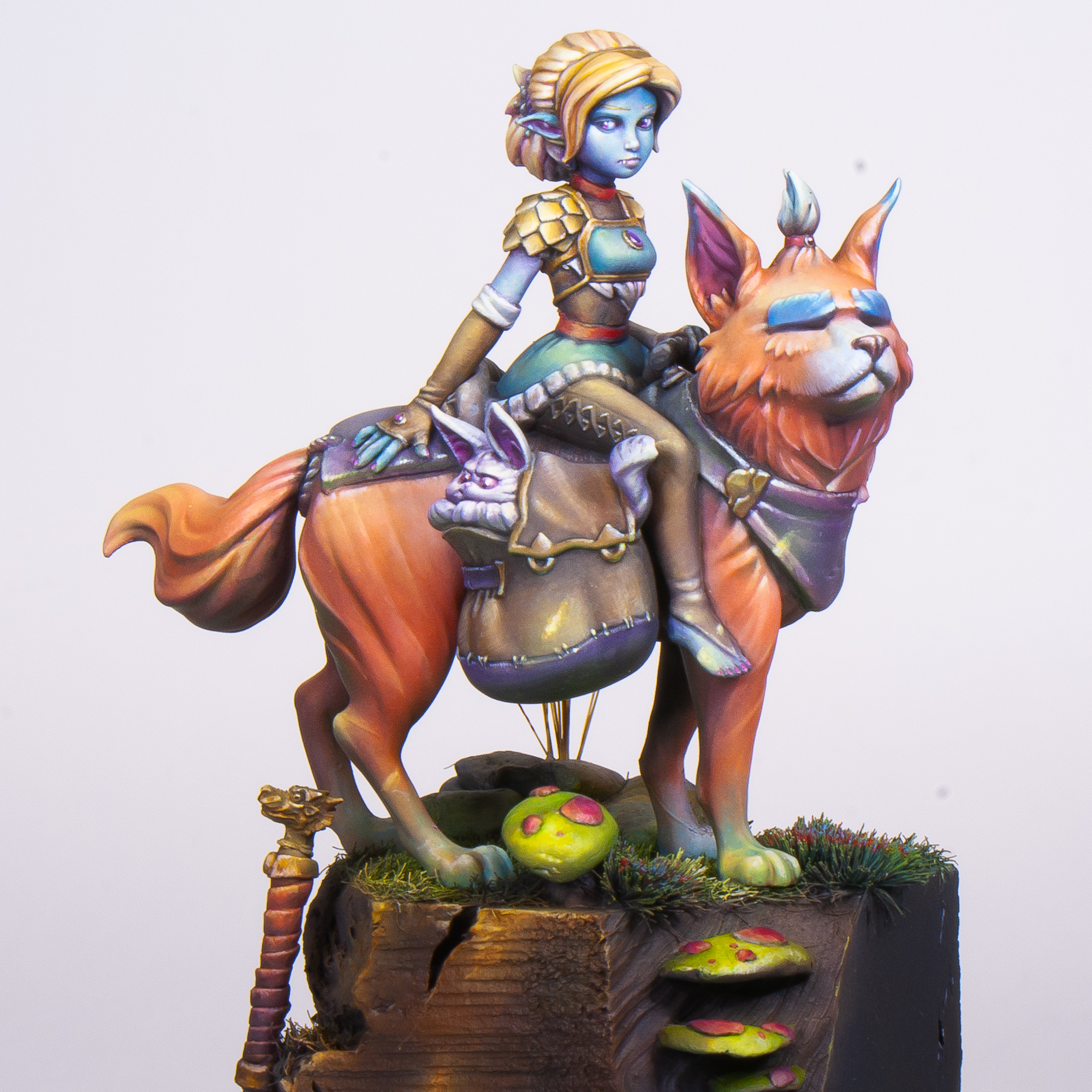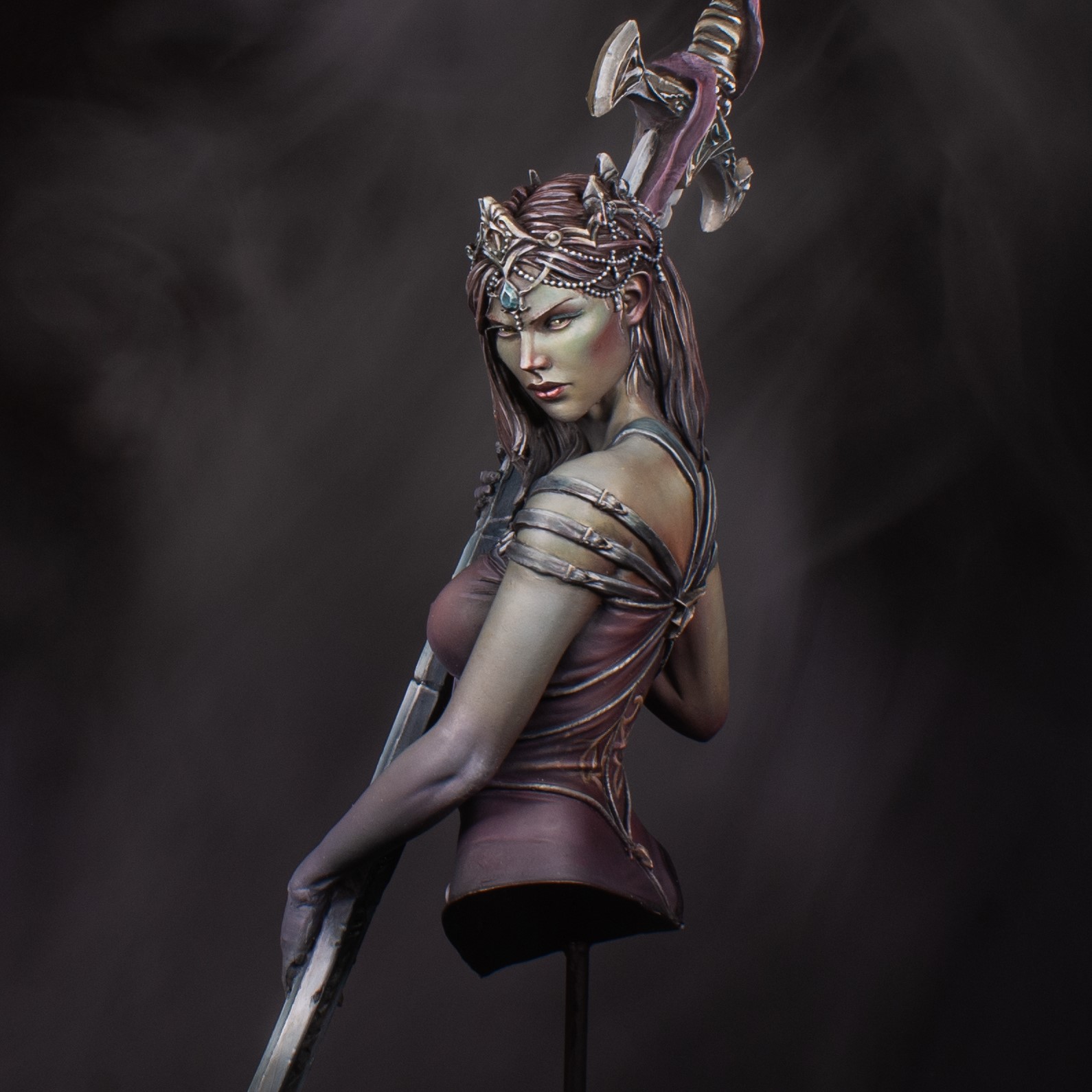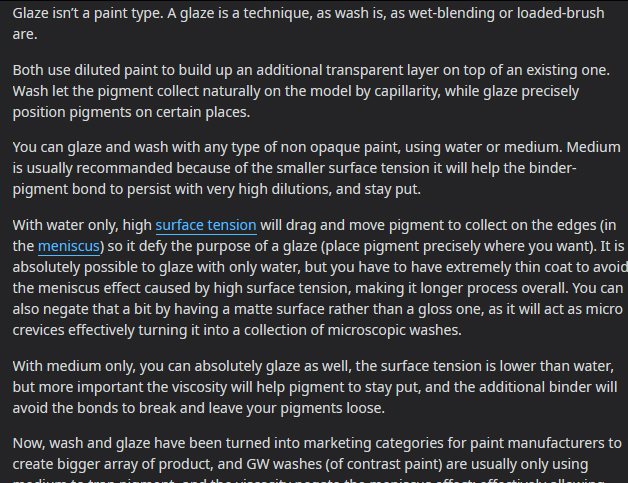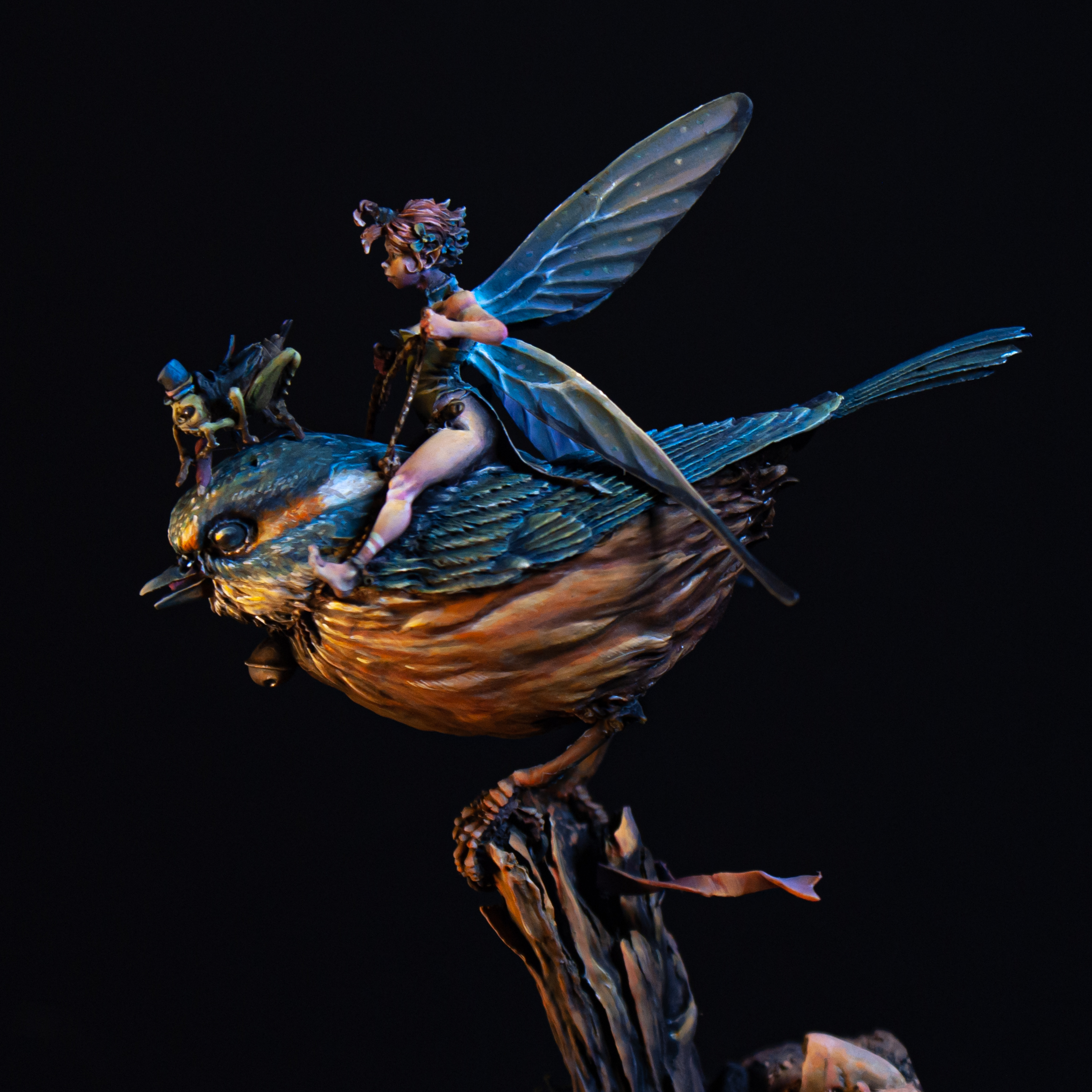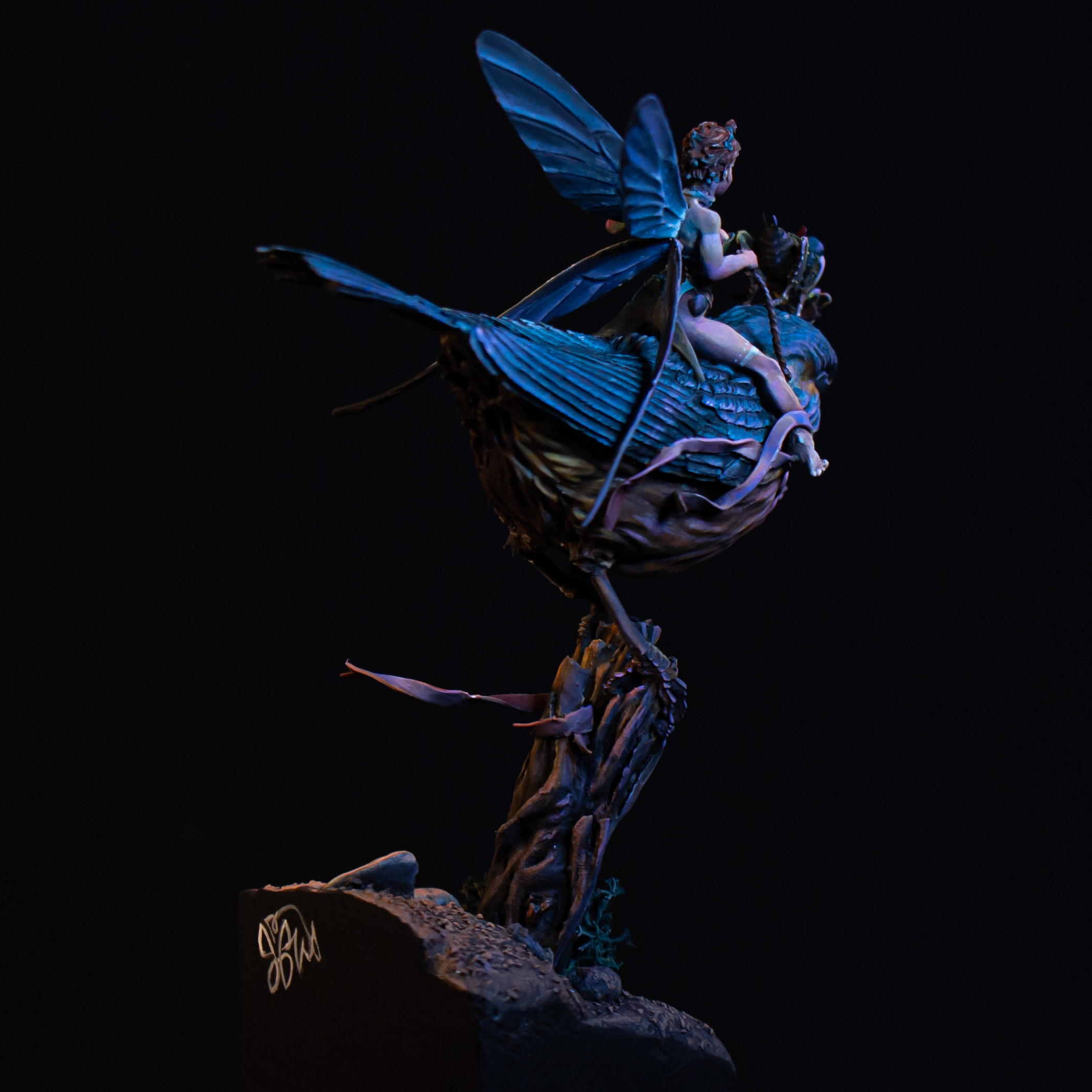Hi Friends,
this time the blog will see something different. I decided to start interviewing artists that in some way have been important for my personal journey. The first one is relatively little known in the community – both because of his decision to limit usage of socials but also because he’s fairly “new” to miniature painting (more on this later).
However, i think his style is so amazing that i’m certain soon we will hear more often about him.
We met on Reddit, on the occasion of a small contest held by the “r/minipainting” sub (amazing community btw, i encourage you to have a look at it). I must admit that at the time i had mixed feeling about him, probably because under many aspects he’s the opposite of me: to make you understand, if we were in Dragonball he’d be Goku and i’d be Vegeta. 🙂
Where i am quite introvert and somber, he was talkative, bright, always ready to help other painters by giving them great feedback. Something i should probably take example from.
We exchanged some messages. Then, one day he contacted me via pm, we started talking – he even asked me for feedback on an ongoing model, something many painters would never do! – and found we have in common many ways of thinking.
I thought it was a good idea to interview him, because in my opinion he has a lot to give to the community.
So without further ado, and directly from the capital of Occitanie, Toulouse, i introduce you:
Romain “GrOgus” Schoemaeker
Hi Romain, and thank you for accepting this interview. Let’s go straight to the 10 questions that will allow us to know something more about you.
1) The first question is rather predictable: how did you approach the world of miniature painting?
I think it’s something I’ve always been fascinated about since my very early childhood. In museum I could spend hours admiring miniature scale reconstructions or sceneries.
More concretely 15 Years ago or so, as most of my generation did, I was painting Warhammer40k and other Games Workshop figures. At the Beginning of the COVID lockdown, I actually started scale modelling of 1/35 WWII AFV, then started adding some figures.
Eventually I realized that the real joy of the project was breathing life in these figures, so I quickly moved to figure only Diorama, only to definitively focus on miniature painting, with a preference for busts.
2) Being relatively “young” as a miniature painter, your progress and current skill level is amazing!
Apart from your individual potential, one could wonder if you had been advantaged by your previous experience with different mediums, or if some routine/habit helped you improve faster.
Actually I never stopped drawing, painting and producing “Art” in various shape of forms throughout my life.
Never had any academic training, but I had a oil painter mentor for an Atelier I attended once per week for quite some time in my teenagehood; he made me discover what Art is with a big “A”.He quickly advised me to try different media, to get a feel for it, understand its potential and constraints. And thus I did Oil on canvas, Gouache and Acrylics, Watercolors, Ink Calligraphy, Oils Pastels, and recently tried digital painting …
I settled for a while on Watercolors, because of the flexibility I found in it with wet-on-wet, glaze and layer and the rapid, if not instant dry time. It was also a very simple setup that I always had at disposal.
So Yes, my previous experiences brought me many advantages. Starting with technical ones like brush control, paint dilution, paint behaviour, dry time, varnishes etc … which have a definite impact when you start painting your first minis. (E.g. I already had Raphael 8404 sable brushes since years, to paint watercolors)
Another very important feature I carried over is color mixing and palette management, being able to know how to achieve a given color, hue or saturation, and how to move it from here, which also translates into the “color theory” knowledge basket. How complementary colors behave in a mix, what is also referred to as ‘navigating the color wheel’ …
Then the workspace organization also helps a lot: during my watercolor years, I learned to paint mostly on the go, with a minimalist setup, firstly to keep it practical, but I quickly grew to like it.
I remember my mentor used to tell me “a clean workspace makes for a clean work”. Care about you work, but most importantly care about your tools; cleaning duty is always important and not to be neglected.
Lastly and more generally, the composition aspects and personal style; overall palette and color selection, light behavior on surfaces, volumes, contrast management, negative spaces, storytelling, details etc are omnipresent concepts in all “traditional” 2D Art medias, and add up to what is the “Soul” of your piece.
From left to right, a selection of Romain’s works in chronological order: the learning curve is amazing.
3) Linking to the previous question, what would you suggest to other painters in order to improve quickly?
Definitely try and experiment as much as possible; paint different scales, different paint types, different styles, different brushes, different light setup … I kept a bit of each experiment with me to define my own style and things I’m the most comfortable with.
Another exercise which is as old as Art, is “Master Copy”; reproduce something you like, learn from it, and make it your own. Self- taught artists can improve a lot by this, but eventually mentorship and workshops turn out to be extremely formidable catalysts if you can afford them.
Art is also about knowledge, and as every discipline, you have to carefully balance theory and practice to get further faster.
Read book, learn to see things (the Artist see things, while other watches) life if the best example of arts, be constantly mindful of shapes, value, lights, reflections, colors, hues, atmospheres … looking for knowledge sources via tutorials, books, traditional media theory is the SAME, because colors are the SAME, so don’t be shy to tap into that hundred years old knowledge and history.
None of these are mandatory, but they will tremendously speed things up. But eventually, my advice would be to paint what you like, and advance one step at a time … Rome wasn’t built in one day.
4) Even if in your portfolio we find models painted in beautiful saturated colors, one of your distinctive features is the frequent use of muted and grayish color schemes.
Let’s hear more about this, open your mind to us!
Greys and Browns, are often referred to as “subdued” colors, and they are the colors which are the most interpreted by the brain, because they carry much less informations than strong color. That also means they are the colors which imply the biggest “interpretation” to the viewer.
What I find the most fascinating with desaturated colors, is how dependent they are from their context: in the same piece, a grey color can be used in both light and shadows, I often refer to the famous checker shadow optical illusion.
It’s ultimately my vision of reality that translates in that style, because life is not manichean, there is no right or wrong, good or evil, light or dark … life is everything that is in between.
Is Robin Hood right or wrong? Is saving a killer right or wrong? Is this grey light or dark? … Eventually I like to offer the viewer a central place in the interpretation of my pieces
Two rather colorful works of Romain, opposed to two busts where he displays his masterly use of subdued tones.
5) Now, something about personal tastes: what is it that you like/dislike to paint?
What I like the most are Eyes … they are the smallest part of all subjects, yet they are the most meaningful:
human grew to be focus on them for survival, that’s why we subconsciously treat them as the highest priority; or brain is formed by millenniums of evolution to search for eyes, that is why we see eyes in clouds, or in otherwise random shapes … they are also a testament of the emotions. I always paint eyes in the beginning, and usually rework them a lot.
That also means that figures where you can’t really see the eyes are something much less interesting to me, that’s why I tend to focus on busts.
I like a lot to paint skin, because everything can be skin, it has its own rules to respect, but it’s the material that gives you the widest canvas for creativity.
To me, skin is the story, eyes are the emotion, hands are the actions, the rest is the context.
“Lone Wolf & Kappa”: this bust from Spira Mirabilis (originally called Baby Kappa) is a good example of storytelling told through eyes, face, hands etc
6) Another peculiarity of yours is that you often leave detailed feedback on others’ paintjobs, full of technical information and suggestions.
I met you on Reddit, and you’re pretty active there in supporting other painters. Looks like this way of helping people is an important part of you, something that makes you feel good.
Being a Mentee is the best way to grow and learn who you can be as I explained earlier, but mentoring is the best way to discover who you truly are.
What I mean by that, is that Art being a constant loop between analysis, planning and execution, and honing the Analysis comes from knowledge, Planning comes from creativity and self, and execution comes from experience.
Teaching allows you to take the execution away, and to practice what you learnt, discover what you are.
I started to give feedback during the first Reddit Contest I joined, and I conducted an experiment of giving my true unfiltered opinion (Analysis) and what I would personally do (Planning).
I was skeptical about the reception at first, because I was blunt and going against the norm (Praise or Skip). But it turned out to be extremely well received. What made it so, is that I always accompanied my ideas with visual support, because my drawing skills allowed to, giving an immediate graspable support to my otherwise shady blunt & written comments.
What I ultimately want to achieve, is to debunk some false ideas, that you can only provide feedback to people “with lower skills than yours” (I quoted that because I wholeheartedly disagree even with this mere concept);
if you are the viewer, you have an opinion (Analysis), and even if you don’t know how to articulate it (Planning) it doesn’t mean you can share it. I’ve had the best advice and analysis (which I definitely included) from people that just started in the hobby/painting.
This Community is really welcoming and passionate, and extremely receptive, and I’m proud to be part of it.
I just want to give as much as I’ve taken from it (call it my personal balance). Most importantly I never look for fame or praise, but I also know how to enjoy it when it comes.
Some screenshots of feedback left on the /r/minipainting sub. As you can see he’s quite talkative, so open Reddit and go pester him with your questions!
7) We mentioned Reddit: if we exclude P&P, it’s the only social you use. Why don’t you have any others, and what is your opinion of the hobby community in this era full of socials and different media?
I’m a strong believer that Art should be judged, because interpretation means subjectivity, and subjectivity means judgement.
Now what I don’t believe in, is that Art pieces should be compared. How could you compare Caravaggio, Andy Warhol and Banksy ? Who’s better ? What does better even mean ?
Working in IT, and making use of Social and “Digital Marketing” on a regular basis, I saw it turn from social exchange platform as initially designed as a pure digital marketplace, where visibility and “likes” becomes a new currency, where traders are known as “influencer/content creators”.
This perverts the social interactions on these platforms, where reception of the content takes over the meaning of it. (e.g. clickbait). It’s but a giant evergrowing advertisement billboard, where Envy is slowly replacing Inspiration, and interactions are biased and commercial.
I don’t have anything to sell, so I don’t have any social.
8) The miniature world is rapidly evolving also under the technical side. For example, 3d printing is becoming more accessible, new paints and other products get released etc.
In short, what are your thoughts on this matter ?
Media evolves with technology, giving us more possibilities, we should embrace it.
It’s like when digital painting started appearing where traditional media ruled as kings (E.g. like in advertisement): it didn’t fully replace them, it just reshuffled the borders.
Purposeful Branded Products is a byproduct of any expanding niche markets, capitalizing on modern society consumerism behaviours. You grow away without it. Competition is the regulator, so I’d say at macro level, it’s evolving from a company monopoly/duopoly to a much more competitive landscape, and we are yet to see it’s consolidation like in the past decades with modeling side of things (with Tamyia, then Ammo, AK, Mig …).
What we need in art is quite rudimentary, so what they sell is convenience. I’m not the best customer for that, but convenience has it’s pros & Cons. It’s up to everyone to make their choice. The good thing is now you do have the choices more easily laid out to you, where it wasn’t obvious before with the surge of content, (DIY wet palette, use of traditional acrylics or Oils vs “miniature” paints … ).
9) Sometimes we hear saying how the world of miniatures is becoming mainstream, since often new releases falls under categories already widely explored. What’s your opinion on this subject, and what kind of new and innovative models you’d like to see in the future?
I think this Art form is at the crossing of Sculpture, Modeling and Painting.
But let’s not forget there wouldn’t be anything without the sculptors. I think they are getting more and more recognition in our microcosm (e.g. Patrick Masson finally winning for the first time a best of show in MSS with an unpainted sculpture). We start to see miniature art form going through photography, and even some galleries have temporary and permanent miniature expositions.
This form of art, by its own nature, has a very deep relationship with it’s viewer, because it offers much more control;
you control the angle you want to see it from, and look at it from top, or side because of the size … compared to other types of traditional media, which doesn’t cope well with massive visit in museums, which in itself is a critical requirement for “mainstream” visibility or dominance.
But I believe the era of new technology like augmented reality, photogrammetry, could get you closer to the viewing experience while being accessible for bigger numbers … but only time will tell. COVID did really catalyze the explosion, visibility and accessibility of this art form, it falls on us to leverage on this momentum …
Romain’s interpretation of Tinkerbell, a popular sculpt of the aforementioned Patrick Masson. Retailed by Blacksmith Miniatures.
10) What does painting miniatures mean for you?
To me, Miniature Painting is like any other form of painting.
It’s first and foremost a communion with your media, and a very deep personal relation you developed over time as it shapes this vision you have, infusing each project with a piece of you.
I paint simply for the sake of painting. I find it relaxing, entertaining, and cathartic in the prime sense: purging myself of emotions.
I rarely keep any finished pieces, I have the habit of selling the best ones to self-sustain the expenditures – a habit I developed rapidly because art can cost, and my parents weren’t really willing to finance it all – and give away the others ones.
Whatever the media I rarely do commissions, did that for a time, but almost lost the will to paint in the process.
I’ve no idea how many pieces I produced, and i rarely look back at them (even though I do enjoy to). My Art pieces simply are bread crumbs of my life I leave behind for anyone to follow the path, or for individual birds to eat…
With this last – and a bit emotional – answer the interview is over and it feels appropriate to close it by leaving below a likewise emotional paintjob.
Thanks Romain for the time you devoted to this, i hope to see some new work from you soon!
And of course, thanks to all readers: i hope you enjoyed this kind of interview, because i plan to do more in the future.
Until next time,
Lorenzo
